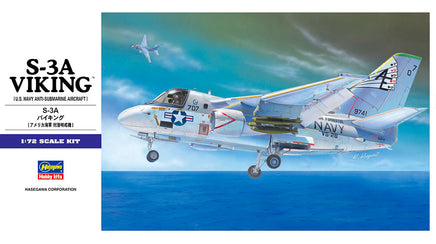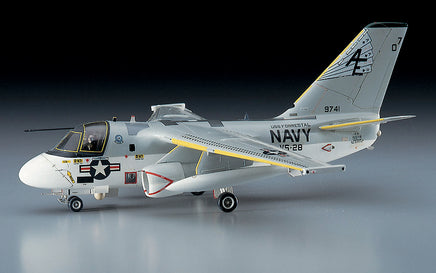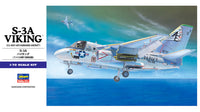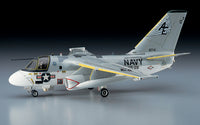S-3A Viking [U.S. Navy Anti-Submarine Aircraft]
The Lockheed S-3A Viking was adopted by the U.S. Navy as the successor to the Grumman S-2 Tracker and became the world’s first carrier-based jet-powered anti-submarine patrol aircraft.
The S-3A is equipped with state-of-the-art anti-submarine detection systems, including the APS-116 radar, infrared detection devices, a retractable magnetic anomaly detector (MAD), an active sonar system, and electronic countermeasure (ECM) equipment. It can carry up to four homing torpedoes or depth charges in its internal bomb bay, and its underwing pylons can be fitted with various bombs, rockets, and illumination flares for attack missions. Additionally, it features an extendable aerial refueling probe above the cockpit, and both the main wings and vertical stabilizer can be hydraulically folded for carrier storage.
Operational deployment began in 1975, and the aircraft was assigned to 12 squadrons. Variants of the S-3A include the US-3A, modified for carrier-to-shore transport duties, and the upgraded S-3B, which was enhanced with the capability to deploy AGM-84 Harpoon anti-ship missiles.
Specifications:
- Crew: 4
- Wingspan: 20.93 m
- Length: 16.26 m
- Height: 6.93 m
- Maximum Takeoff Weight: 21,592 kg
- Engines: GE TF34-GE-400A ×2
- Thrust: 4,207 kg each
- Maximum Speed: 834 km/h
- Fixed Armament: None
- First Flight (prototype): January 21, 1972




